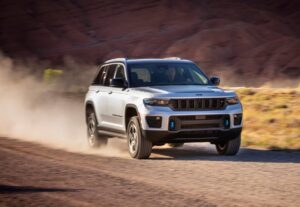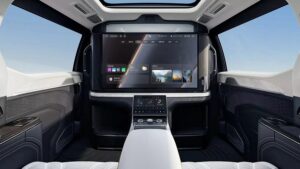Electric vehicles (EVs) are especially vulnerable to the effects of cold weather, with many experiencing a loss of more than 25% in range when operating in colder conditions as opposed to warmer or temperate environments. This dramatic reduction in efficiency is a significant challenge for EV owners, particularly in regions where temperatures frequently fall to single-digit Fahrenheit levels. The root cause of these challenges lies in the diminished chemical reactions within the EV batteries during cold weather. This leads to two predominant issues: a substantial decrease in the vehicle’s overall range and prolonged periods required for battery recharging.
Cold Temperatures and EV Battery Chemistry
In cold conditions, the chemical processes within EV batteries are less efficient, resulting in a noticeable drop in driving range and an extended duration needed for recharging. This underscores the need for advancements in EV technology to adapt more effectively to low-temperature environments, ensuring better performance and reliability.
The performance of an EV’s battery is intrinsically linked to temperature. Batteries are comprised of cells that produce electricity through chemical reactions. These reactions are temperature-sensitive; they slow down in cold weather, resulting in reduced efficiency and power output. This slowdown not only impacts the vehicle’s range but also affects how quickly the battery can accept a charge. Warmer temperatures facilitate these chemical reactions, allowing for better performance and faster charging.
Dealing with Reduced Range in Cold Weather
The extent of range reduction in cold weather varies depending on the EV’s make and model, as well as the specific environmental conditions. While internal combustion engines also experience efficiency losses in cold conditions, the impact is not as pronounced as in EVs. Various factors such as the vehicle model, the surrounding environment, and usage of in-car accessories (like heating systems) can collectively contribute to decreased performance and range in EVs.
Overcoming Challenges of Increased Charging Times
Longer charging times in cold weather are another significant issue for EVs. This problem is largely attributed to the batteries needing to warm up before they can charge efficiently. Moreover, the performance of charging stations can also be adversely affected by the cold, leading to further delays in charging durations. Although the primary focus is on the EV’s battery, the functionality of the charging infrastructure in cold conditions is also a critical aspect. Despite rigorous testing in extremely cold temperatures (down to -40°F or -40°C), charging times can still experience an increase of about 5% in such conditions.
Strategies to Enhance EV Efficiency in Cold Weather
While Electric vehicle (EV) owners might not have control over the weather, but there are several effective strategies they can employ to ensure their EVs continue to operate efficiently in cold conditions. EV owners can adopt several strategies to mitigate the effects of cold weather on their vehicles:
A. Home Charging and Indoor Parking for Optimal Battery Health One of the most effective strategies is to charge the EV at home and park it indoors, if possible. Keeping the EV in a garage or similar sheltered environment protects it from extreme cold, which helps maintain battery health and ensures a fully charged start.
B. Pre-Conditioning: Ensuring Battery Readiness Pre-conditioning is a vital practice in cold weather. By warming up the EV while it’s still connected to the charger, owners can ensure both the vehicle and the battery are at an optimal temperature for operation. This strategy utilizes the charger’s energy for heating, preserving the battery’s charge for driving.
C. Smart Heating: Balancing Comfort and Range In EVs, internal heaters draw power directly from the battery. Setting the heater to a lower temperature can help conserve energy and extend the vehicle’s range. Additionally, using auxiliary features like heated seats and steering wheels can provide comfort without significantly draining the battery.
D. Battery Management: Optimizing Charge Levels Maintaining the battery’s charge level between 20% and 80% can enhance its efficiency and longevity. This practice, known as the 80/20 rule, is particularly crucial in cold weather to ensure the vehicle has enough energy for operation while avoiding excessive strain on the battery.
E. Understanding Regenerative Braking in Cold Weather Regenerative braking systems, which are common in EVs, can also be less effective in cold weather. These systems rely on the battery’s ability to absorb energy quickly. In cold temperatures, the reduced chemical reaction rate in the battery can limit this ability, leading to a slight decrease in the efficiency of regenerative braking.
F. Tire Pressure and Winter Tires: Ensuring Optimal Traction Proper tire pressure is essential for optimal EV performance in cold weather. Low temperatures can cause tire pressure to drop, reducing efficiency and traction. Additionally, using winter tires or all-season tires can improve handling and safety in snowy or icy conditions.
By understanding these aspects and implementing the appropriate strategies, EV owners can significantly enhance their vehicle’s performance and reliability in cold weather, ensuring safer, more efficient operation during the winter months.






